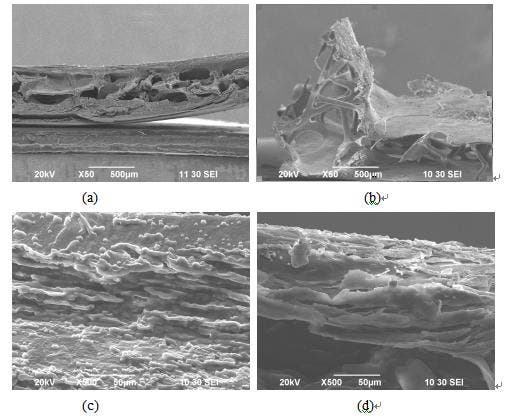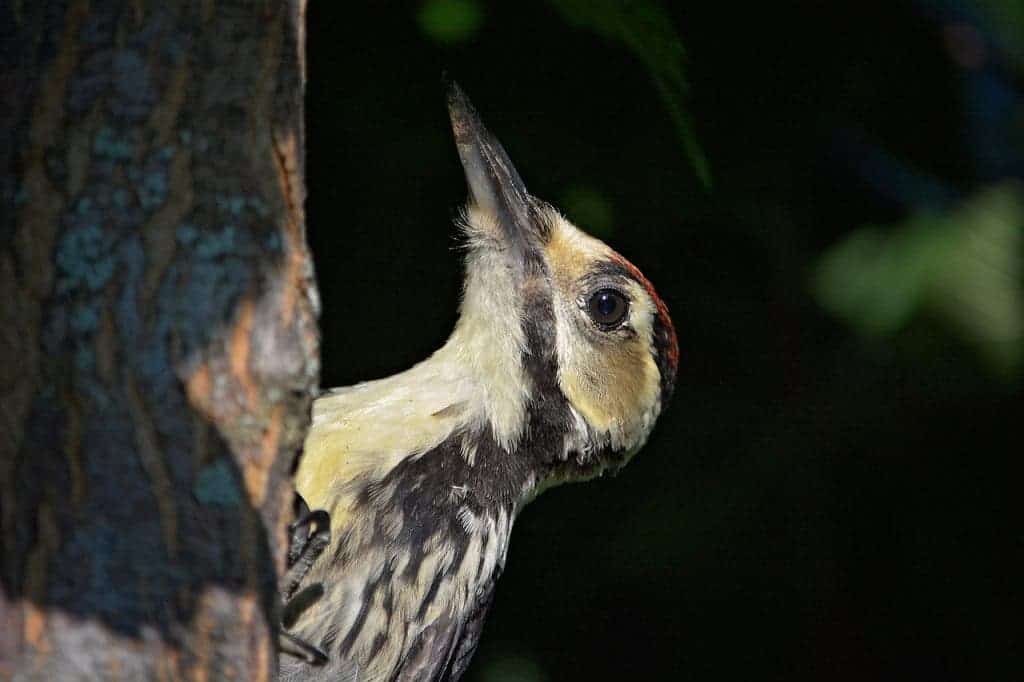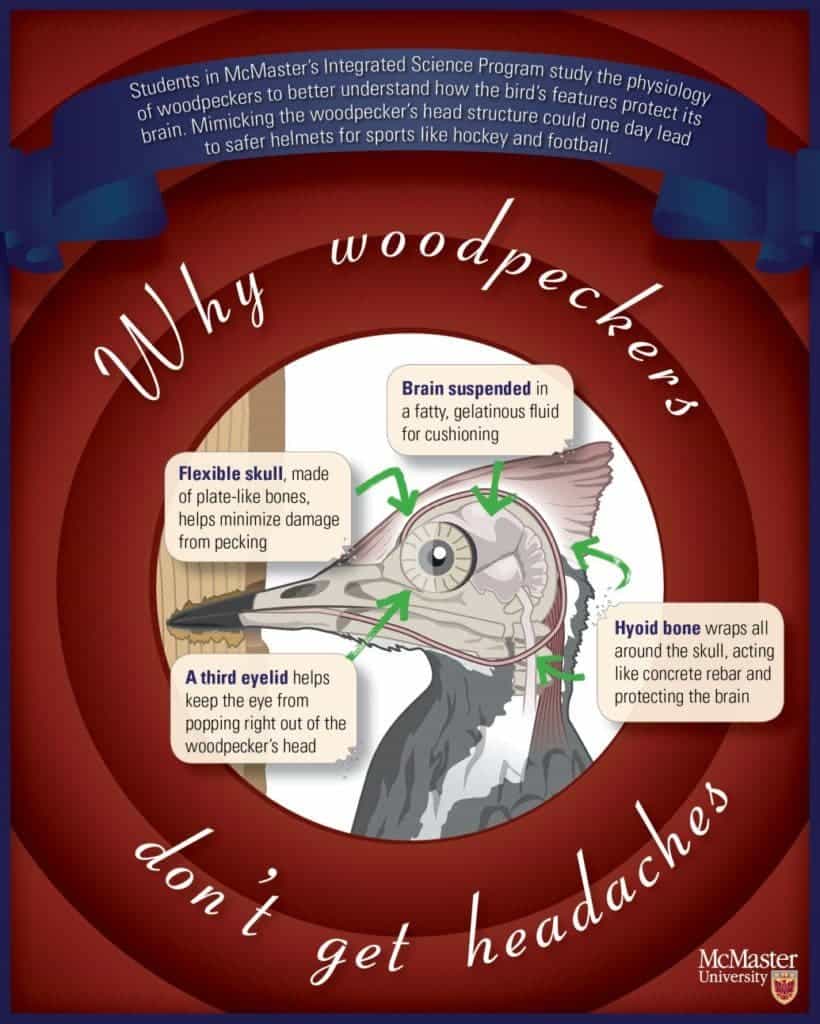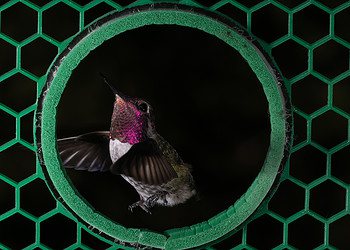Your typical woodpecker will bang its head against wood 20 times per second, accelerating 1,200 times more than gravity. In an average day, a woodpecker does this around 12,000 times.
Despite the serious head banging, the woodpecker suffers no concussions or any kind of head injury. What’s this bird made of?
A skull made of sponge-like bone
To get to the bottom of things, a team of researchers from Beijing and Hong Kong zoomed in on the woodpecker’s behavior closer than anyone ever had. The birds were put inside a special chamber where two synchronous high-speed cameras recorded their pecking, and a force sensor measured the pecking force.
The birds’ heads were also scanned with X-rays and an electron microscope to image the bone structure. Preserved woodpecker skulls were also placed in a material testing machine and crushed for science.
This data was then used to build a 3D model of the birds’ heads which they can then smash in simulations, without hurting any actual live woodpeckers.
This battery of tests revealed the woodpecker’s skull is unsurprisingly very sturdy, unlike most birds whose skulls are fragile. It’s made out of extremely strong, yet compressible sponge-like bone. The spongy bone is unevenly distributed around the skull, being most concentrated in the forehead and the back of the skull. Additionally, the beak and skull are connected by an elastic tissue that helps cushion the blow.
Inside the skull, the woodpecker’s brain is also armored. Unlike human brains which are floating about in a pool of cushioning cerebrospinal fluid, the woodpecker’s brain is very tightly enclosed in the skull, with little or no cerebrospinal fluid. This means its brain doesn’t move about very much and collision force is spread out evenly over a larger area. Probably, this is the most important feature that helps woodpeckers avoid concussions.

The beak’s construction also helps a lot. The outer tissue of the upper beak is longer than the lower beak, but the bone structure of the lower beak is longer and stronger than the upper one. This overbite divests impact stress away from the brain and distributes it around the lower beak and bottom parts of the skull.
When you’re hammering out at over 1,000 G, you better wear some protection goggles. Woodpeckers have so-called nictitans — thick membranes beneath the lower lid of the eyes — which protect them from debris. The nictitans also act as seatbelts for the eyes, fixing them in place so the retina doesn’t tear and the eye doesn’t pop right out the skull for that matter.
The high-speed cameras also revealed the woodpeckers vary the paths of their pecks. As they constantly move their heads and beaks around, so fast that’s impossible to see with the naked eye, the birds essentially minimize the number of times in a row that the skull makes contact in the same point.
The researchers say 99.7 percent of the energy from striking a tree is absorbed by the woodpecker’s body, and only 0.3 percent actually impacts the brain. This energy mostly heats the brain, so to cope woodpeckers usually peck in short bursts with breaks in between. Researchers suppose these brief breaks serve to cool the woodpecker’s brain.
Findings appeared in the journal PLOS ONE.








